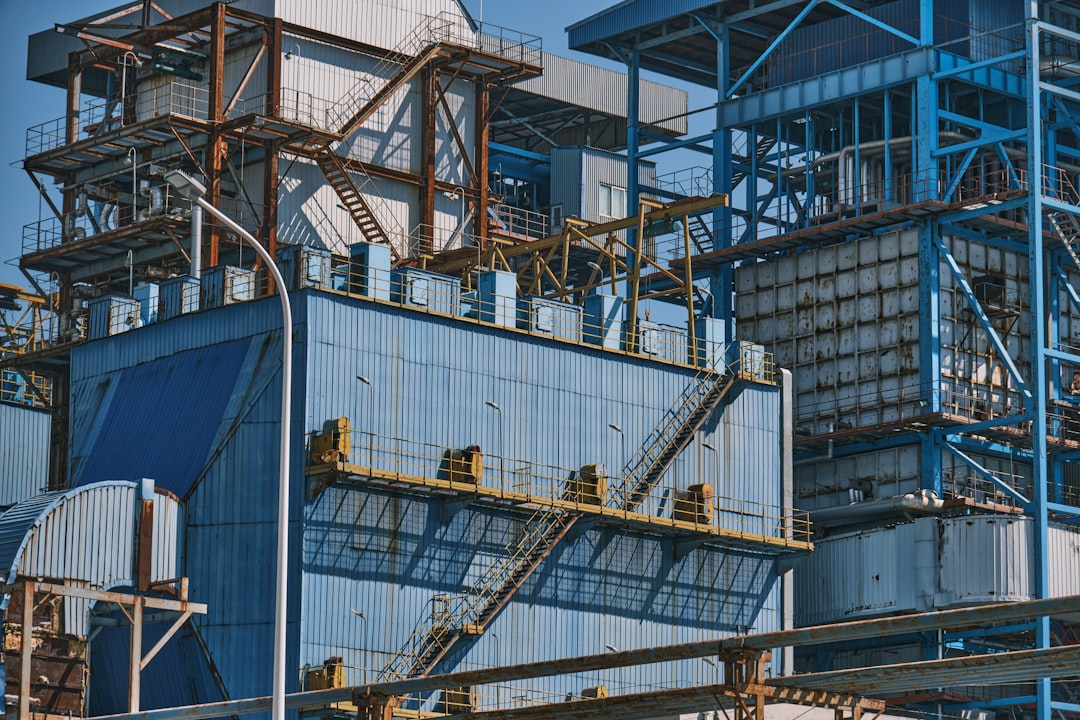The energy sector relies heavily on robust and reliable infrastructure. At the heart of many power plants, from fossil fuel to nuclear and renewable sources, lies a critical material: steel. Its strength, versatility, and durability make it an indispensable component in the design, construction, and operation of these vital facilities. This post delves into the multifaceted role of steel in power plant integration, exploring its diverse applications and highlighting its crucial contribution to efficient and safe energy generation.
1. Structural Steel: The Backbone of Power Plants
Steel’s high tensile strength and formability make it the ideal material for constructing the massive structures that house power generation equipment. From the towering boiler houses of coal-fired plants to the robust frames supporting wind turbines, steel provides the essential structural integrity needed to withstand extreme operating conditions. Large-scale fabrication techniques, including welding and bolting, allow for the creation of complex and intricate steel frameworks capable of supporting immense weight and resisting seismic activity. Specialized high-strength low-alloy (HSLA) steels are frequently employed to optimize weight and strength, minimizing material usage and reducing construction costs without compromising structural integrity. The design and engineering of these steel structures require meticulous calculations and consideration of factors such as wind load, thermal expansion, and potential seismic forces to ensure long-term stability and safety.
2. Pressure Vessels and Piping: Containing Power
Power plants utilize numerous pressure vessels and extensive piping systems to contain high-pressure steam, gases, and other fluids critical to the energy generation process. Steel, particularly high-pressure resistant alloys, plays a crucial role here. Boiler drums, superheaters, and reheaters in thermal power plants operate under extreme pressure and temperature conditions, demanding steel with exceptional strength and resistance to creep and fatigue. Similarly, piping systems transporting steam and other fluids must withstand significant pressure and temperature fluctuations throughout their operational lifespan. The selection of specific steel grades involves rigorous testing and analysis to ensure compliance with stringent safety regulations and to prevent catastrophic failures. Regular inspection and maintenance of these steel components are critical to maintaining the safe and efficient operation of the power plant.
3. Steel in Turbine and Generator Construction
The heart of many power plants lies in the turbines and generators that convert thermal or kinetic energy into electricity. Steel plays a vital role in the construction of these critical components. Turbine blades, often made from advanced steel alloys or even nickel-based superalloys with steel components, must withstand extreme temperatures, high rotational speeds, and corrosive environments. The design and manufacturing of these components demand exceptional precision and the use of advanced metallurgical techniques to ensure optimal performance and longevity. Similarly, the stators and rotors of generators are often constructed using steel, requiring high magnetic permeability and excellent electrical conductivity. The use of specialized steel grades and advanced manufacturing processes ensures the efficient and reliable conversion of mechanical energy into electrical power.
4. Steel’s Role in Renewable Energy Power Plants
Steel’s importance extends beyond traditional fossil fuel power plants. In renewable energy sectors, steel remains a crucial material. Wind turbine towers, for example, are primarily constructed from steel, providing the necessary height and structural support for the turbine blades. The design of these towers necessitates the use of strong, yet lightweight, steel alloys to withstand the dynamic loads and environmental factors associated with wind energy generation. Similarly, solar power plants often utilize steel structures for mounting solar panels, providing stability and durability in varying weather conditions. Even in hydroelectric power plants, steel is used extensively in dam construction and associated infrastructure, showcasing its adaptability across diverse renewable energy applications.
5. Corrosion Protection and Maintenance of Steel Components
The harsh operating environments within power plants, characterized by high temperatures, pressures, and potentially corrosive substances, necessitate robust corrosion protection measures for steel components. Various techniques are employed, including coatings (like paints, zinc, or specialized polymer coatings), galvanization, and the use of corrosion-resistant steel alloys (like stainless steel) to extend the lifespan of steel structures and equipment. Regular inspection and maintenance programs are crucial to detect and address corrosion early on, preventing costly repairs and ensuring the continued safe and efficient operation of the power plant. The selection of appropriate corrosion protection strategies depends on the specific operating conditions, the steel grade employed, and the potential environmental factors influencing corrosion rates.
In conclusion, steel’s multifaceted role in power plant integration is undeniable. From providing the structural backbone to forming critical components within the energy generation process, its strength, versatility, and durability are essential for the safe and efficient operation of power plants across diverse energy sources. Continuous advancements in steel technology and manufacturing techniques continue to enhance its performance and broaden its applications in the ever-evolving energy sector.
SEO-Friendly Tags:
- Steel in Power Plants
- Power Plant Construction Materials
- Steel Alloys for Energy
- Power Generation Infrastructure
- Renewable Energy Steel Applications




